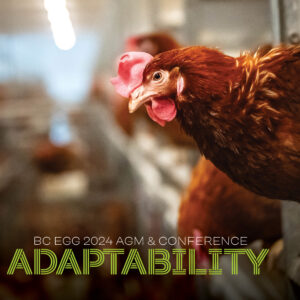Think Eggs
Eggnog Christmas Countdown
This year we’re celebrating the season with a collection of recipes showcasing our favourite holiday beverage: eggnog! We’ve got over…
By Janyce McGregor, CBC News Posted
They hate it. They really do.
Building up to this week’s Trans-Pacific Partnership (TPP) talks in Hawaii, Canada couldn’t miss the message: the U.S. and other Pacific Rim trading partners want supply management scrapped. Or else.
‘Shrewd’ Canada playing long game as TPP talks begin in Maui U.S. may cut Canada out of Pacific Rim trade deal, sources say Canada can pursue trade deal while protecting supply management: Harper
Here at home, farm marketing boards are a bogeyman for Canada’s restaurant and food industry, who are under pressure to keep prices down for consumers.
A system of fixed prices for dairy products, poultry and eggs doesn’t give them the flexibility they say they need to make their margins profitable.
Overpriced yogurt? Blame the quota system blocking the cheaper American stuff.
Outgoing Conservative MP Laurie Hawn said last month that supply management was an “anachronism that needs to disappear.”
But he’s an outlier.
Canada’s politicians — from prime minister to backbencher, government or opposition — usually declare their enduring commitment to protect supply management.
Supply management makes food consumers pay for the cost of producing it. By matching supply quotas with market demand, the industry sets stable, predictable prices.
These farmers don’t need government subsidies or bailouts.
Price comparisons for food can be fraught due to variable factors like transportation costs and retail competitiveness. But some studies suggest Canadians don’t pay any more for milk than consumers in unregulated markets. When Australia ended supply management, the consumer price for milk went up.
Other studies find small price differences. But unregulated farm prices in the U.S., for example, make taxpayers pay twice: the last major farm bill passed in Congress authorized some $1 trillion US in subsidies to keep American agriculture afloat.
Like to buy local? Prefer fresh Canadian products? You’re not alone. But a 100-mile diet is only possible when local farm businesses are stable.
When export-driven beef, pork or grain farmers fall on bad times, their dairy and poultry counterparts, more secure with stable prices, sustain rural economies by continuing to employ people and patronize businesses like vet clinics, machinery dealerships and farm supply stores.
The experience of other countries suggests ending marketing boards could lead to more concentrated industries, with farms operating on a larger scale in fewer locations.
Fresh perishables that don’t travel or age well, like raw chicken, could be harder to find.
When margins are tight and prices fluctuate, farmers need economies of scale to get by. Anyone concerned about the animal husbandry practices and environmental impact of large-scale agriculture may prefer a system that sustains smaller farms. For example, the average American egg farm has about 1.5 million hens. This spring’s Avian influenza outbreak spelled market disaster in such huge barns. The high cost of quota (over $20,000 Cdn per cow) limits the expansion of Canadian dairy farms.
Despite talk of supply management being a trade barrier, Canada has free trade agreements with 44 countries, including the North American Free Trade Agreement with the U.S. and, more recently, significant deals with South Korea and the European Union. Some of the loudest critics of supply management use non-tariff barriers like labelling rules and safety standards to block imports. Most countries protect domestic agriculture interests — but tough rhetoric hasn’t derailed past deals.
The market value of quota held by Canadian farmers is roughly $30 billion ($23 billion in dairy alone). That asset couldn’t be wiped out without consequences. While some inherited quota for free, others financed it at great cost. Could taxpayers afford to buy it out in full? At 50 cents on the dollar? Less?
A 2014 study from the Conference Board of Canada proposed a ten-year phase out, based on book value, not market-value calculations. But even that could cost between $3.6 billion and $4.7 billion for the dairy sector alone. Could a buyout be a boondoggle in the making? The smaller-scale exit strategy for Ontario tobacco farm quota in 2009 was criticized by the auditor general after ineligible farmers received payments.
In addition to federal rules, every province has its own marketing board legislation. Provinces also have inter-provincial agreements. The federal government can’t dismantle this complex system without the provinces. Ready for a potentially-divisive first ministers meeting? Or a federal-provincial court challenge?
It’s true that some of the Tory base is in rural ridings. It’s also true that the dairy industry in Quebec is a powerful lobby with political influence dating back to the 70s. But numerically, more farmers rely on exports for prosperity. Dairy and chicken farmers say they’ll hold their fire until they see what happens.
Would that change if Conservatives sold them out? Time will tell.

This year we’re celebrating the season with a collection of recipes showcasing our favourite holiday beverage: eggnog! We’ve got over…

BC Egg is hosting our 2024 AGM and Conference at the Fairmont Hotel Vancouver. Will you be joining us?

Celebrate World Egg Day with eggs ANY time!